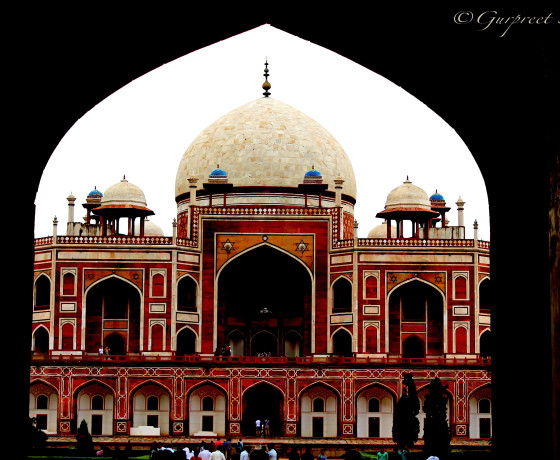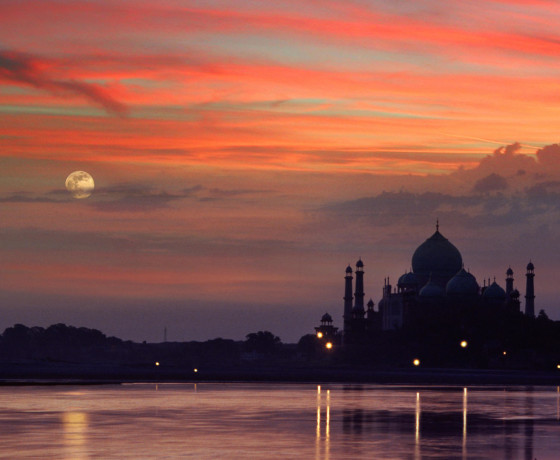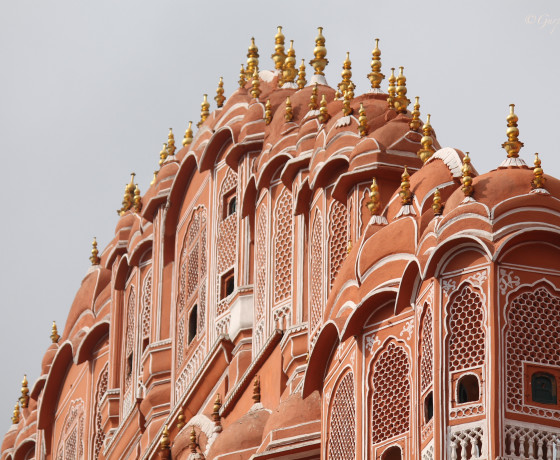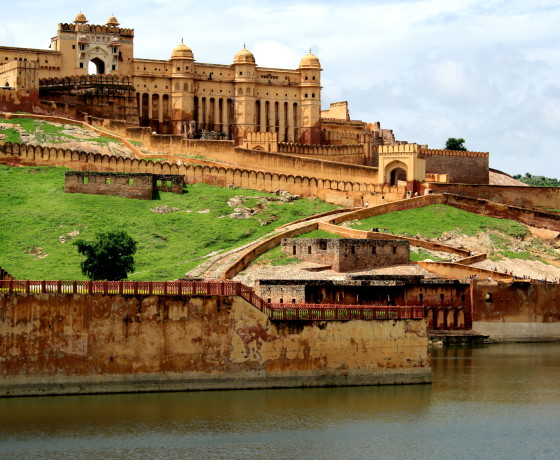Golden Triangle with Tiger
|
Day 01 Arrive Delhi
Arrive Delhi, On arrival you will be met by DestinAsia representative and will escort till your check in at hotel.
The world is the body, Delhi is its soul…is how a 19th century poet described this city that has ever been so many things to so many different people. To the weary travelers on the ancient silk route it was the first plain after having crossed the Himalayan Mountains with the promise of shelter, food and business opportunities. To the Afghan, Turk, Greek, Arab and Roman kings it was a vast and inexhaustible source of treasures of all kinds, to the Chinese travelers it was the land of knowledge and wisdom. Its ageless face saw the advent of Islam. It saw empires being built and destroyed or even merely dismantled to make way for the new and Delhi lived on.
Overnight at hotel.
Day 02 In Delhi – Full Day city tour of Old & New Delhi
Post breakfast in the morning proceed for full day city tour of Old Delhi.
Narrating the city’s Mughal past, Old Delhi, takes you through the labyrinthine streets passing through formidable mosques, monuments and forts. You will also discover lively and colorful bazaars that boast to cater all sorts of good and items at mind-blowing prices amidst a barely controlled chaotic ambience. The imperial city of New Delhi displays the finely curved architecture of British Raj.
Red Fort :
The Red Fort, with a circumference of over 2.2 kilometers, was laid out by the banks of the Yamuna river in the 17th century. The Mughal emperor Shajahan built it with the ambition of concentrating the Mughal power in one monument. Monument is perhaps not the right word. A mini-city is more like it.
Jama Masjid: Built by Shah Jahan in 1658, it is one of the largest mosques in India with a seating capacity of more than 20,000. The mosque is situated near the Red Fort in old Delhi. This is the area that still retains the traditional charm of markets in Mughal times. The bulbous domes and tapering minarets built with marble stand strong and beautiful even to this day. This mosque has three gateways, four angle towers and two 40 m. high minarets. You can even go to the top of minarets and have a bird’s eye view of Delhi.
Later proceed for New Delhi
New Delhi, the capital and the third largest city of India is a fusion of the ancient and the modern. Standing along the West End of Gangetic Plain, the capital city, Delhi, unwinds a picture rich with culture, architecture and human diversity, deep in history, monuments, museums, galleries, gardens and exotic shows. Comprising of two contrasting yet harmonious parts, the Old Delhi and New Delhi, the city is a travel hub of Northern India.
India Gate: This solemn monument was built in memory of the 90,000 Indian soldiers who died in World War I. It was built in 1931, designed by Lutyens, and was originally called the All India War Memorial. The names of the soldiers are inscribed on the walls of the arc of the gate. Later in 1971, an eternal flame was lit here in memory of the unknown soldiers who died in the 1971 Indo-Pakistan war. India Gate stands at the end of Rajpath, and is a popular picnic site especially during hot summer evenings. At night, the Gate is brightly lit and the fountains near the Gate are lit with coloured lights. The sight is delightful.
Humayun’s Tomb: Humayun’s Tomb was the first garden tomb made in India. The garden is divided into 36 squares by a grid of water channels and paths. The square garden is surrounded by a high rubble wall divided initially into four large squares separated by causeways and channels, each square divided again into smaller squares by pathways creating a char bagh. The laying down of the gardens in the Persian style was introduced by Babur and continued till the period of Shah Jahan.
Qutub Minar :
The highest stone tower in India, the Qutub Minar was built by Qutbuddin Aibak, the viceroy of Mohammed Ghori in 1192. It was built to celebrate Ghori’s victory over the Rajputs. The tower and the victory are very significant, because both heralded the birth of a new dynasty – Slave Dynasty. And it laid the foundations of the Delhi Sultanate. And the rest, as one would put it after witnessing this monumental tower, was history.
The Minar is a five-storey building with a height of 72.5 metres. The first storey of the Qutb Minar was completed in the lifetime of Qutbuddin. His son-in-law and successor, Iltumush, added the next three storeys.
Within the complex, is the famous Iron Pillar which has stood for millennia without rusting, Quwwat-ul-Islam, the first mosque built in India, and the Alai Darwaza, the gateway to the complex erected by Alauddin Khilji. The entry to the Minar has been closed, after the tower became infamous for the several suicides that were committed here. Qutub Minar is a successful tribute to architecture, as it captures one’s attention by its sheer mass appeal. Even on close encounter, the attention lingers, owing to the delicate and almost ethereal carvings.
Overnight at hotel.
Day 03 Delhi – Agra (210 kms / 05 hrs approx.)
Post breakfast drive to Agra.
Agra, the beautiful city is situated on the banks of holy river Yamuna. Agra is the third largest city in the state of Utter Pradesh in India and a prominent tourist destination in the country. Millions of tourists visit Agra from all across the world every year to see the beauty of majestic Taj Mahal and other historical monument lying every where in the city. Agra is primarily witness of Mughal architectural excellence and their love for structural designs. Agra is also a prime center of rich cultural heritage and art in India. No trip to India can be considered as complete without visiting to Agra.
On arrival check in at hotel.
Overnight at hotel.
Day 04 In Agra – Full day city tour
Post breakfasr visit Taj Mahal.
For centuries, the Taj Mahal has inspired poets, painters and musicians to try and capture its elusive magic in word, colour and son. Since the 17th century, travellers have crossed continents to come and see this ultimate memorial to love, and few have been unmoved by its incomparable beauty. Taj Mahal stands in the city of Agra, in the northern Indian state of Uttar Pradesh, on the banks of the Yamuna river. It was built in the memory of the beautiful Arjumand Bano Begum, who won the heart of a Mughal prince. She was married at 21 to Emperor Jahangir’s third son Prince Khurram and stayed loyally by his side through good times and bad: in the luxurious royal palaces of Agra as well as the transient tents of war camps. A labour of love ~ Work on the mausoleum began in 1633 and 20,000 workers laboured for 17 years to build it.
The most skilled architects, inlay craftsmen, calligraphers, stone-carvers and masons came from all across India and lands as distant as Persia and Turkey. The master mason was from Baghdad, an expert in building the double dome from Persia, and an inlay specialist from Delhi. Intricacy in design ~ what is most amazing about the Taj Mahal is the fine detailing. The coloured inlay is never allowed to overwhelm the design, as carvings done in relief sensitively balance it. The ornate pietra dura and relief carvings are of floral, calligraphic and geometric designs. However, flowers remain the main decorative element as the tomb depicts a paradise garden. The skill of the inlay worker is so fine that it is impossible to find the joints, even when as many as 40 tiny pieces of semi-precious stones have been used in the petals of a single flower. Some of the best calligraphy of Koranic verses can be seen around the entrance arches and on the two headstones. The colours of the Taj ~ Taj Mahal changes its moods with the seasons and the different times of the day. At dawn, the marble has a delicate bloom in shell pink, by noon it glitters majestically white, turning to a soft pearly grey at dusk. On full-moon away against the star-spangled sky. Monsoon clouds give it a moody blue tint and it appears and disappears like a mirage in the drifting mists of winter. It can be solid and earthbound, fragile and ethereal, white, amber, grey and gold. The many faces of Taj Mahal display the seductive power of architecture at its best.
Afternoon visit Agra Fort & Itmad-Ud-Daulah
Agra Fort: Few Forts in the earth have a more charming storey to tell then Agra Fort. Initially designed as an invincible military organization by Akbar, Fort obtain by the time of Shah Jahan, all the grace and magnificence of an royally palace. located 2.5 kms upstream of Taj Mahal on the right bank of Yamuna was built under the course of Akbar.
Itmad-Ud-Daulah: About 4 kms north of Taj Mahal, on the left bank of river Yamuna, is the completely balanced marble mausoleum of Mirza Ghiyas Beg, Nur Jahan’s Father. The twice storied tomb is about 20m four-sided figure, built of the premium Indian marble and is stuffed with mosaic inlaid with semi valuable stones.
Overnight at hotel.
Day 05 Agra – Fatehpur Sikri – Ranthambore ( 310 kms / 05-06hrs approx.)
Post breakfast drive to Ranthambore enroute visiting Fatehpur sikri.
37 kms from Agra is built a city predominantly in Red Sandstone and is called Fatehpur Sikri. This town was built by the Mughal Emperor, Akbar. He had planned this city as his capital but shortage of water compelled him to abandon the city. After this within 20 years, the capital of Mughals was shifted to Lahore.
Continue to Ranthambore National Park…
The Ranthambore National park is located in the Sawai Madhopur district of southeastern Rajasthan, which is about 130 km from Jaipur. Being considered as one of the famous and former hunting grounds of the Maharajas of Jaipur, today the Ranthambore National Park terrain is major wildlife tourist attraction spot that has pulled the attention of many wildlife photographers and lovers in this destination.
On arrival check in at hotel.
Overnight at hotel.
Day 06 In Ranthambore – Morning & Evening Jungle Safari
Enjoy Morning & Evening jungle safari in Ranthambore Naional Park using Jeep / Canter.
Overnight at hotel.
Day 07 Ranthambore – Jaipur – (200 kms / 04 hrs approx.)
Post breakfast drive to Jaipur.
Jaipur is the first planned city of India, located in the desert lands of Rajasthan. The city that once had been the capital of the royalty, now serves as the capital city of Rajasthan. The very structure of Jaipur resembles the taste of the Rajputs and the Royal family. In the present date, Jaipur is the major business centre for the natives of Rajasthan with all requisites of a metropolitan city. The city of Jaipur, painted in pink, grasp the appreciation of every visitor. One can see that hoary charm still alive in the avenues of Jaipur.
On arrival check in at hotel.
Overnight at hotel.
Day 08 In Jaipur – Excursion to Amber fort + City tour
Morning excursion to Amber fort using Elephant failing Jeep ride.
The Amber Fort was built in the 16th century by Raja Man Singh. The construction of the Amber Fort was started by Man Singh I in 1592 and completed by his descendant Jai Singh I. The Amber Fort is built in red sandstone and white marble. The palace complex has very interesting apartments, the likes of which are not to be found anywhere else in India, leave aside Jaipur. The rugged forbidding exterior of Amber Fort belies an inner paradise where a beautiful fusion of Mughal and Hindu styles finds its ultimate refinement. Painted scenes of hunting and war adorn the walls of the Amber Fort with precious stones and mirrors set into the plaster.
The fort has 4 sections; each with the premises and one has to climb up through the imposing stairway or else the broad aisle, where one can ride on the elephant back for royal feel. The main gate Surajpol that leads to the Jaleb chowk, which is the main courtyard from where one can walk up the stairway, that leads to the palace. Jaleb Chowk was also the area where returning armies were welcome and they would display their war earnings to the population at large.
Afternoon proceed for city tour.
HAWA MAHAL – built in 1799, by Maharaja Sawai Pratap Singh, is the most recognizable monument of Jaipur. The 5 storied stunning semi-octagonal monument having 152 windows with over hanging latticed balconies is a fine piece of Rajput architecture. Originally designed for the royal ladies to watch and enjoy the processions and other activities, on the street below. Now it houses a well laid out museum. The display “Jaipur past and present” is the special feature of this newly setup museum.
JANTAR MANTAR (Observatory) – built in 18th century by Maharaja Sawai Jai Singh II, the huge masonary instruments were used to study the movement of constellations and stars in the sky. Enormous sun-dial still provide accurate time, which are subject to daily corrections.
CITY PALACE – situated in the heart of the old City, it occupies about one seventh of the old city area. The palace is a blend of Rajput and Mughal architecture, it houses a Seven storeyed Chandra Mahal in the centre, which affords a fine view of the gardens and the city. Diwan-E-Am (Hall of public audience) has intricate decorations and collection of manuscripts, Diwan-E-Khas (Hall of private audience) has a marble pawed gallery Mubarak Mahal has a rich collection of costumes and textiles. There is a Clock Tower near Mubarak Mahal. Sileh Khana has a collection of armory and weapons.
Evening at leisure for independent activities.
Overnight at hotel.
Day 09 Jaipur – Delhi (260 kms / 04 – 05 hrs approx.)
Morning free.
Later drive back to Delhi.
On arrival, you will be checked in at hotel.
Later in the evening you will be transferred to International terminal to connect flight for onward destination.
** Imp: all our program’s are 100% tailor made and can be modified as per the requirements.






